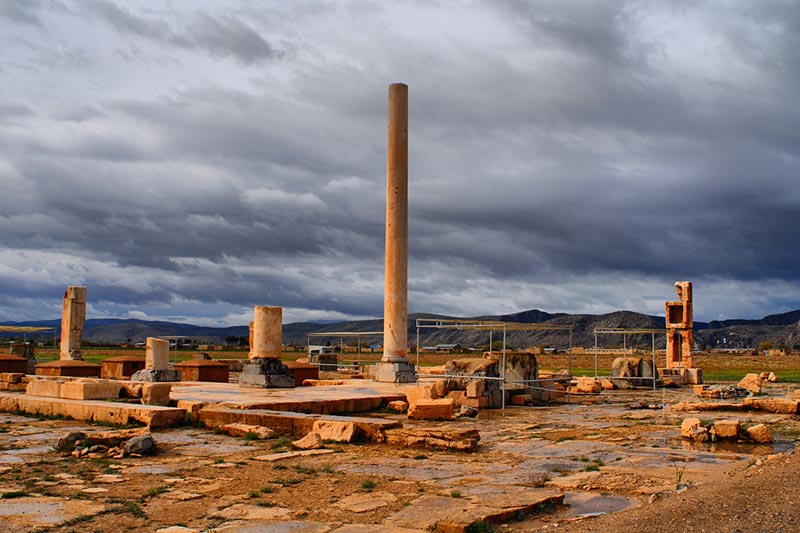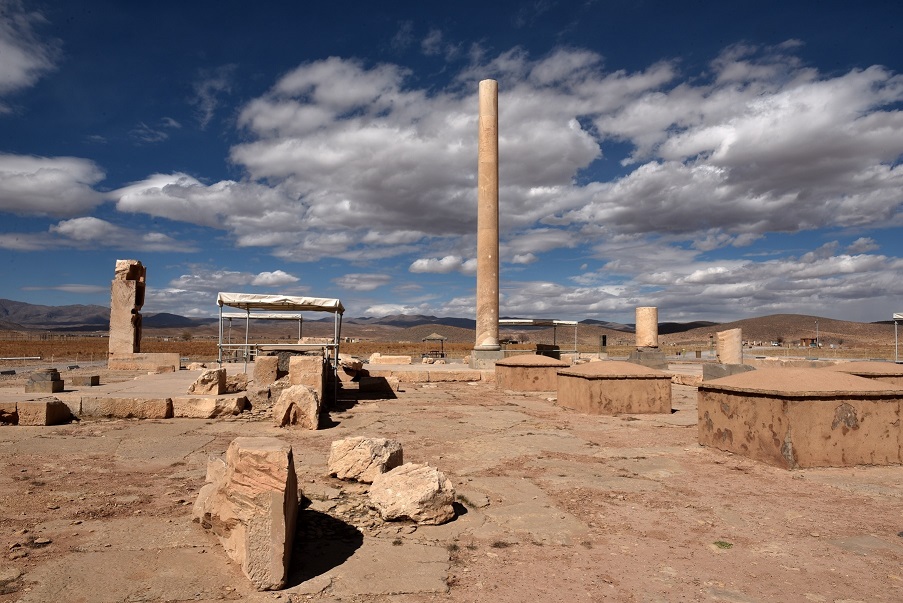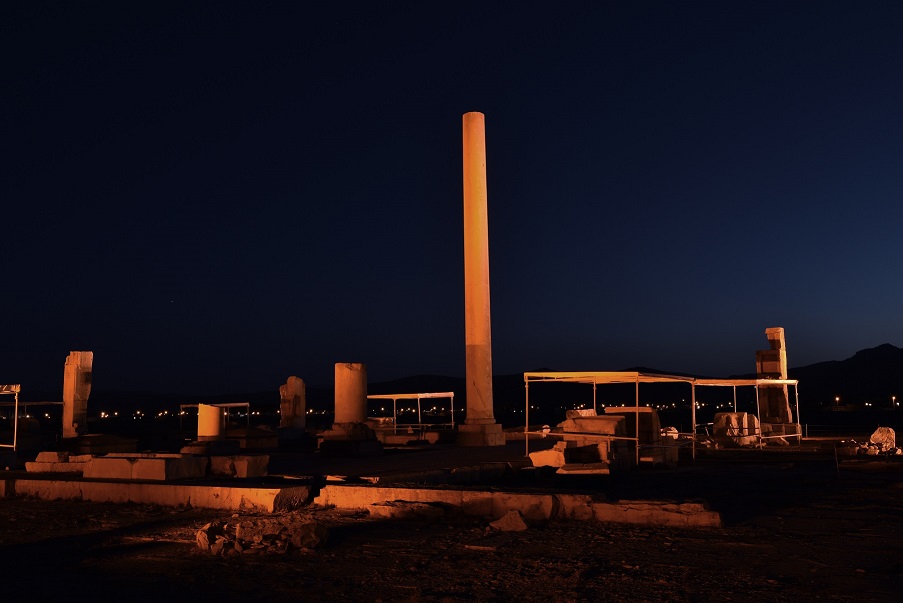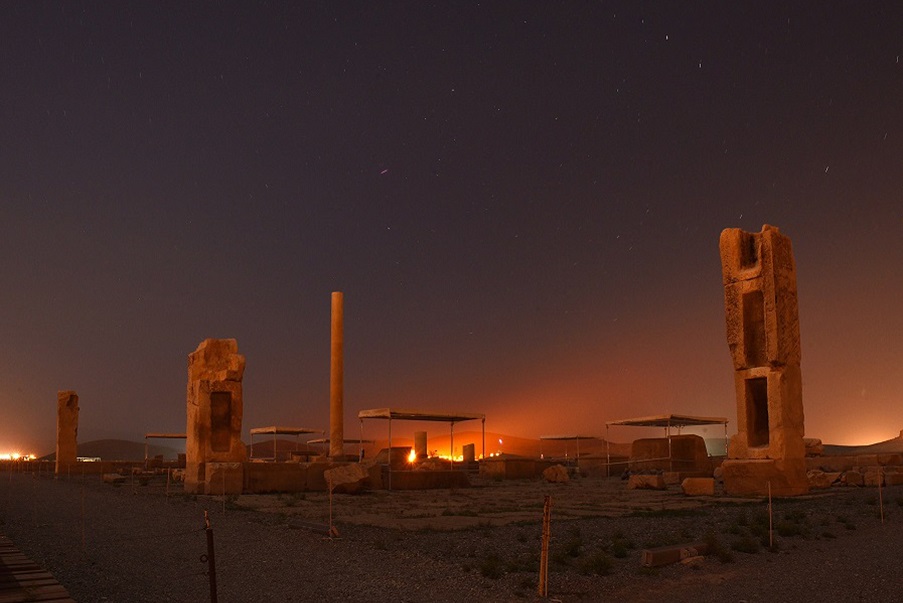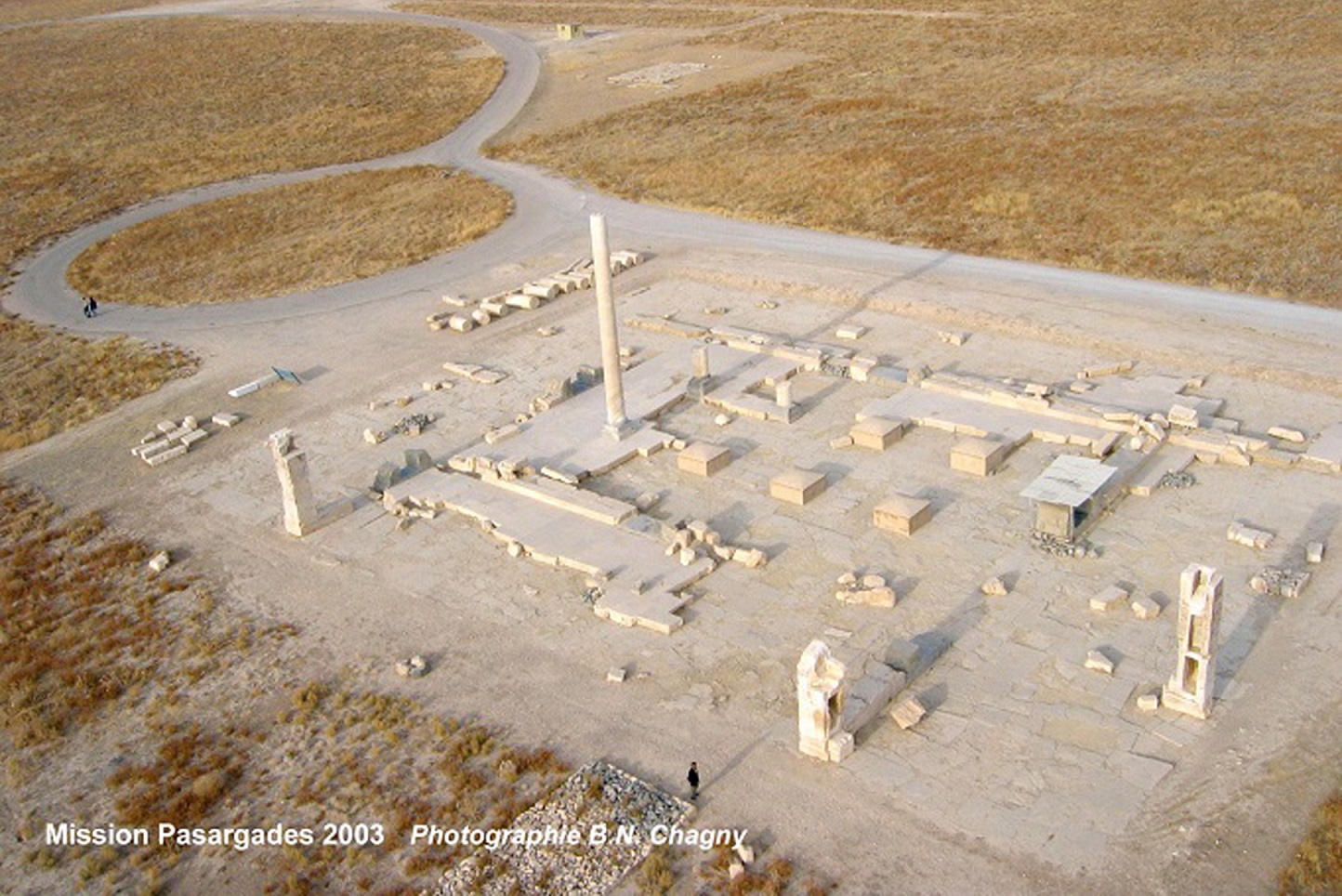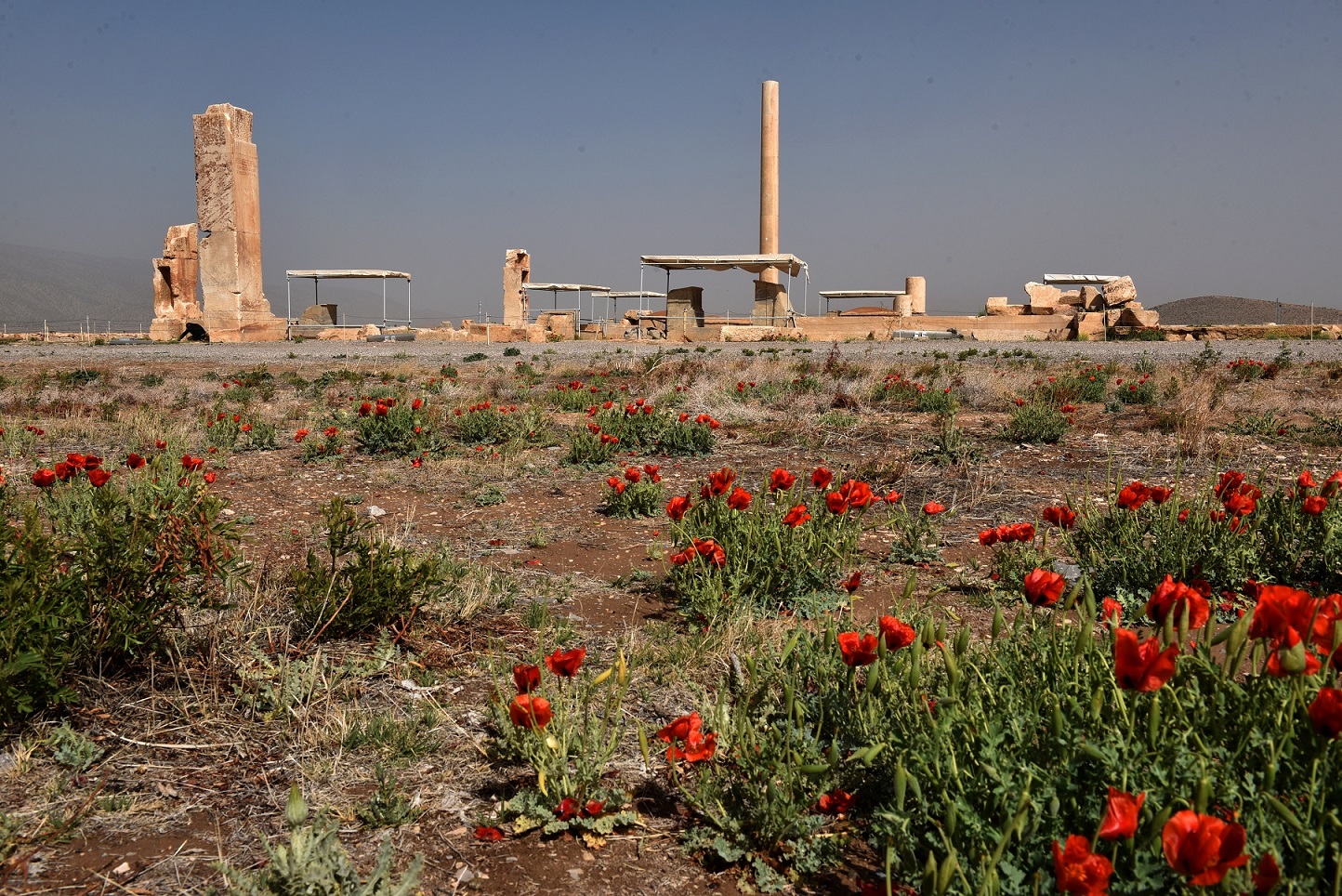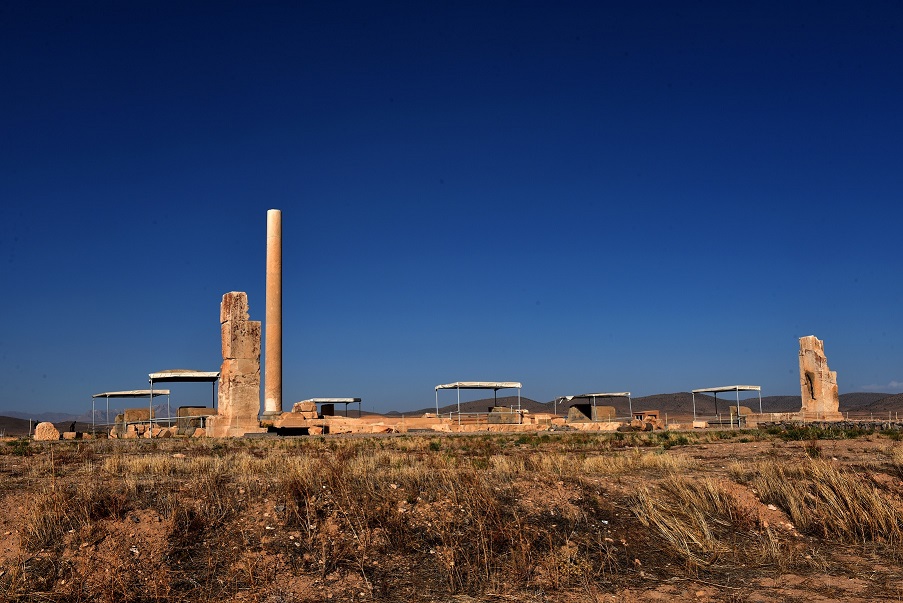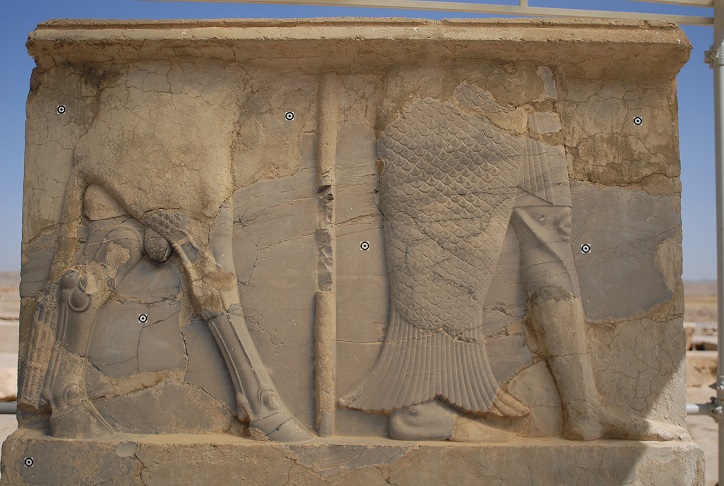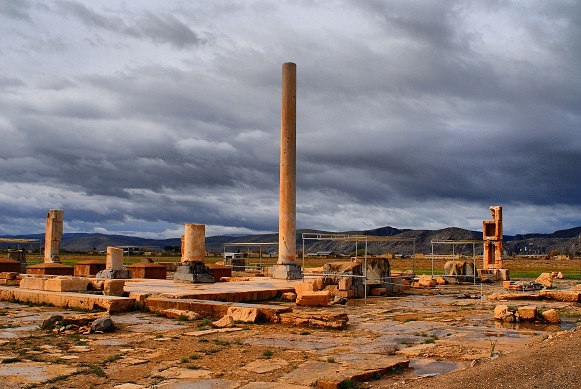Known for many years as the location of the only and oldest surviving intact column at Pasargadae and throughout Iran, having more than 2550 years old, Palace S (Herzfeld’s “Palast mit der Saule”) was undeniably built to serve as the principal public palace for Cyrus and his court in a very distinctive island -like location surrounded by the permanent stream supplied from a not too far river, Pulvar.
Similar to the other structures in the palace complex, the core of Palace S consists of a central rectangular columned hall, here with two rows of four columns, and doorways leading from the center of each wall to an adjoining portico. The columns of the porticoes were less than half the height of those in the central hall so that on passing through the porticoes and entering the hall, visitors would have been struck by the light that streamed from the high windows into the elevated space above them. The northern portico, which faces the paradise of Cyrus the Great, extends well beyond the width of the hall itself while the other three run only to the length of the hall walls, with the ensuing corner spaces being occupied by two small rooms. Each of these porticoes is terminated on either side by a stone column pier (anta) marking the end of a wall with the writing in three languages of Old Persian, Elamite, and Babylonian that says: “I Cyrus, the King, an Achaemenian”. The reliefs that once adorned the four entrances of the main hall are best preserved in the door jambs of the shorter side of the main hall. They showed processions of supernatural creatures like a warrior with bare legs followed by a monster with eagle-like feet that end in talons. Also, there is a barefooted human figure in the full-length fish-skin cloak, followed by a bull-man facing outside the palace where a perennial stream was flowing. On another doorway remains of two long-robed bare-footed men and three legs of an even-toed ungulate can be seen which have been variously described as tribute bearers bringing an animal as a gift, as priests leading a bovine animal to sacrifice, and as servants leading animals to the scene of a feast.



